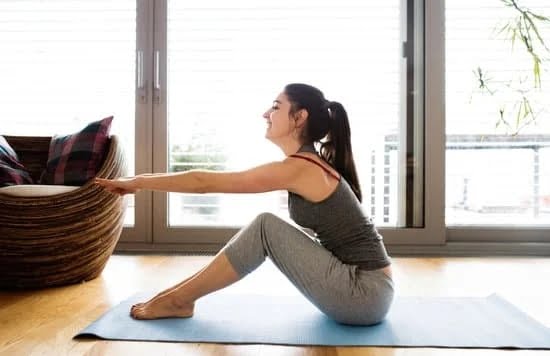Are you looking to incorporate a fitness bike riding routine into your exercise regimen? Cycling offers a wide range of health benefits, from improved cardiovascular health to increased muscle strength and endurance. In this article, we will explore the various advantages of fitness bike riding and provide valuable tips for creating a structured routine that will help you achieve your fitness goals.
When it comes to overall health and wellness, few activities can rival the numerous benefits of bike riding. Engaging in regular cycling not only helps improve cardiovascular health but also aids in muscle engagement, making it a fantastic full-body workout. Whether you’re an avid cyclist or just starting, incorporating a fitness bike riding routine into your lifestyle can lead to significant improvements in both physical and mental well-being.
In addition to discussing the health advantages of bike riding, we will also delve into the process of choosing the right fitness bike for your individual needs. From selecting the best type of bike for your fitness goals to considering different features, our guide will help you make an informed decision before embarking on your cycling journey. So get ready to pedal towards better health and discover the many benefits that come with a dedicated fitness bike riding routine.
Choosing the Right Fitness Bike
When incorporating bike riding into a fitness routine, selecting the right fitness bike is crucial to ensure that you can achieve your fitness goals effectively. The first step in choosing the best bike for your needs is to consider your fitness goals and the type of riding you want to do.
If you’re aiming for high-intensity workouts and challenging terrains, a mountain bike or road bike may be suitable. On the other hand, if you prefer a more leisurely ride with an upright position, a hybrid or cruiser bike could be ideal.
Considerations for different types of bikes and their features are also important when making your selection. For example, if you plan to ride on rough terrain, you’ll need a bike with shock absorption and durable tires. If your rides will take place in urban areas with varying inclines, gearing options will be an essential factor in your decision. Additionally, adjustable seat height and handlebar positioning are other features to keep in mind when choosing a fitness bike.
It’s also beneficial to test ride different bikes before making a purchase to ensure that the fit and feel of the bike are comfortable for your body mechanics. Getting fitted at a local bike shop can also provide valuable insight into the best frame size and adjustments needed for optimal performance.
By taking these factors into account, you can select the right fitness bike that aligns with your goals and offers an enjoyable riding experience as you engage in your fitness bike riding routine.
Setting Up Your Bike Riding Routine
When setting up a fitness bike riding routine, it’s important to create a structured schedule that aligns with your overall fitness goals. Whether you’re aiming to improve cardiovascular endurance, build muscle strength, or simply enjoy the mental health benefits of biking, having a plan in place can help you stay on track and see progress over time. One effective approach is to incorporate different types of workouts into your routine, such as interval training and endurance rides.
Interval training involves alternating between periods of high-intensity riding and recovery or lower-intensity segments. This type of workout can help improve cardiovascular fitness, increase speed and power, and burn more calories in a shorter amount of time. On the other hand, endurance rides focus on longer durations of steady-state riding at a moderate intensity level. These rides are valuable for building aerobic capacity and mental resilience.
To get started with creating your bike riding routine, consider the following tips:
- Determine how many days per week you can commit to riding your fitness bike.
- Mix up your workouts by scheduling both interval training sessions and longer endurance rides throughout the week.
- Gradually increase the duration and intensity of your rides as your fitness level improves.
- Listen to your body and allow for adequate rest days to prevent overtraining and injury.
By planning out your bike riding routine in advance, you can ensure that you’re incorporating a variety of workouts to support both your physical fitness and overall enjoyment of the activity.
| Bike Riding Routine | Recommended Frequency |
|---|---|
| Interval Training | 2-3 times per week |
| Endurance Rides | 1-2 times per week |
| Rest Days | At least 1-2 days per week |
Warm-Up and Stretching
When it comes to incorporating a fitness bike riding routine into your exercise regimen, it’s essential to prioritize proper warm-up and stretching techniques. Not only does this help prepare your body for the physical demands of biking, but it also reduces the risk of injury and improves overall performance. Here are some key considerations for warming up and stretching before hitting the road on your fitness bike.
Importance of Warming Up
Before hopping on your fitness bike, it’s crucial to engage in a proper warm-up routine. This can involve light cardio exercises such as brisk walking or easy cycling to gradually elevate your heart rate and increase blood flow to your muscles.
Warming up helps loosen stiff muscles, lubricate joints, and mentally prepare you for the workout ahead. By taking just 5-10 minutes to warm up, you can significantly reduce the likelihood of muscle strain or injury during your ride.
Dynamic Stretching Exercises
In addition to warming up, incorporating dynamic stretching exercises into your pre-ride routine is highly beneficial. Dynamic stretches involve controlled movements that actively stretch your muscles and improve flexibility. Some effective dynamic stretches for cyclists include leg swings, hip circles, arm circles, and torso twists.
These movements help improve joint mobility and range of motion while also promoting better circulation throughout the body. By performing these dynamic stretches before getting on your fitness bike, you’ll be better equipped to tackle the physical demands of riding while minimizing the risk of stiffness or discomfort.
Tips for Effective Stretching
It’s important to note that static stretching (holding a stretch position for an extended period) is best reserved for post-ride recovery rather than pre-ride warm-up. Instead, focus on dynamic stretching exercises that mimic the movements you’ll be doing during your bike ride.
Be sure to pay attention to major muscle groups used in cycling, such as the quadriceps, hamstrings, calves, hips, and lower back. By incorporating a brief yet targeted warm-up and stretching routine into your fitness bike riding regimen, you’ll set yourself up for a more enjoyable and injury-free experience on two wheels.
Building Endurance on the Bike
When incorporating bike riding into a fitness routine, building endurance is a key component to improving overall physical fitness. Endurance rides help to strengthen the cardiovascular system, improve stamina, and enhance the body’s ability to sustain prolonged physical activity. Whether you’re training for a long-distance cycling event or simply want to increase your endurance on the bike, there are several strategies to consider.
One effective strategy for building endurance on the bike is to gradually increase ride duration and intensity over time. This can be achieved by adding a few extra miles to your regular route each week or extending the length of your longest ride by 10-15 minutes at a time. It’s important to listen to your body and avoid pushing yourself too hard, but gradually challenging yourself will lead to noticeable improvements in endurance.
In addition to gradually increasing ride duration, interval training can also be incorporated into your fitness bike riding routine to help improve endurance. Interval training involves alternating between periods of higher intensity riding (such as sprinting) and periods of lower intensity recovery.
This type of training can help improve cardiovascular efficiency and increase an athlete’s lactate threshold, allowing for longer and more intense rides. Incorporating both steady-state endurance rides and interval training into your bike riding routine can lead to significant improvements in overall fitness and performance.
| Endurance-Building Strategies | Benefits |
|---|---|
| Increase ride duration and intensity over time | Improves cardiovascular strength and stamina |
| Incorporate interval training | Improves cardiovascular efficiency and lactate threshold |
Incorporating Strength Training
Complementing Bike Riding With Strength Exercises
While bike riding is an excellent form of cardiovascular exercise, it’s also crucial to incorporate strength training into your fitness routine. Strengthening the muscles used in bike riding can improve performance, prevent injury, and enhance overall fitness. By targeting key muscle groups such as the quadriceps, hamstrings, glutes, and core, you can improve your riding efficiency and power.
Recommended Strength Exercises
To complement your fitness bike riding routine, consider incorporating exercises such as squats, lunges, deadlifts, and leg presses to specifically target the lower body muscles involved in cycling. Additionally, core exercises like planks and Russian twists can help improve stability and posture on the bike. It’s essential to prioritize proper form and technique when performing these strength exercises to maximize their effectiveness and reduce the risk of injury.
Frequency and Recovery
When integrating strength training into a bike riding routine, it’s essential to allow for adequate recovery time between workouts. Aim for 2-3 sessions of strength training per week on non-consecutive days to allow the muscles to recover and adapt. Additionally, be mindful of how your body responds to both biking and strength training-adjust your schedule as needed to prevent overtraining or fatigue.
By incorporating targeted strength exercises into your fitness bike riding routine, you can enhance your overall performance, reduce the risk of injury, and promote balanced muscular development for a more sustainable and effective fitness regimen.
Recovery and Rest Days
In any fitness bike riding routine, it’s crucial to prioritize rest and recovery. Giving your body time to recover is essential for preventing injuries and allowing muscles to repair and grow. Incorporating rest days into your routine can also help prevent burnout, keeping you motivated and energized for each ride. Here are some tips for incorporating recovery and rest days into your fitness bike riding routine:
1. The importance of rest: Rest days are just as important as workout days. They give your body the opportunity to recover from the physical stress of bike riding, reducing the risk of overuse injuries. It’s during periods of rest that your muscles actually repair themselves and become stronger.
2. Active recovery: On rest days, consider engaging in light activities such as walking or gentle stretching. These activities can promote blood flow to the muscles, aiding in recovery without putting additional stress on the body.
3. Listen to your body: Pay attention to how your body feels during and after rides. If you experience persistent fatigue, soreness, or decreased performance, it may be a sign that you need more recovery time.
4. Balance is key: While it’s important to prioritize rest, finding a balance between activity and recovery is crucial for maintaining a sustainable fitness bike riding routine. Don’t hesitate to take additional rest days if needed, especially after particularly intense workouts or when feeling under the weather.
By incorporating adequate rest and recovery into your fitness bike riding routine, you can ensure that you continue making progress while avoiding the risk of burnout or injury. Remember that listening to your body and finding a healthy balance between activity and rest is key in maintaining long-term consistency in your fitness journey.
Tracking Progress and Setting Goals
When incorporating fitness bike riding into your routine, it’s important to track your progress and set achievable goals. This not only helps to measure your improvements over time but also keeps you motivated and focused on your fitness journey.
Here are some methods for tracking progress and setting goals:
- Keep a log: Whether it’s in a notebook or using a fitness app, keeping a log of your rides can help you see how far you’ve come. Note down details such as distance, time, average speed, and any challenges or achievements during the ride.
- Use technology: Consider investing in a bike computer or using GPS tracking apps on your smartphone to monitor your rides. These devices can provide valuable data on your performance and help you set specific targets for improvement.
- Set measurable goals: Instead of simply aiming to “get better at biking,” set specific, measurable goals such as increasing the distance you can ride in a set amount of time, improving average speed, or conquering challenging terrain.
By tracking your progress and setting clear goals, you can stay accountable and motivated throughout your fitness bike riding routine.
Remember that progress may not always be linear, and setting realistic goals is just as important as achieving them. Celebrate every milestone along the way and adjust your goals as needed to maintain a sustainable fitness bike riding routine.
Conclusion
In conclusion, incorporating a fitness bike riding routine into your exercise regimen can bring about numerous health benefits, including improved cardiovascular health and muscle engagement. By selecting the right bike for your fitness goals and setting up a structured routine, you can maximize the advantages of this form of exercise.
Additionally, warming up before a bike ride and incorporating dynamic stretching exercises can help prepare your body for the workout and reduce the risk of injury. Building endurance on the bike involves gradually increasing ride duration and intensity, as well as pushing through mental and physical barriers during longer rides. It’s also important to incorporate strength training exercises that target the muscles used in bike riding to complement your cycling routine.
Moreover, recovery and rest days are crucial for preventing burnout and allowing your body to recuperate. Tracking progress and setting goals can help you stay motivated and monitor improvements in your fitness level over time. Ultimately, maintaining a sustainable fitness bike riding routine is all about finding enjoyment in the process and celebrating your progress along the way. With consistency and dedication, you can reap the full benefits of this rewarding form of exercise.
Frequently Asked Questions
How Long Should You Ride a Stationary Bike to Get a Good Workout?
The duration of a good workout on a stationary bike varies from person to person. Generally, 30 minutes to an hour is considered sufficient for most people to get a good workout and improve cardiovascular fitness.
Is 30 Minutes of Biking a Day Enough Exercise?
Yes, 30 minutes of biking a day can be enough exercise for some people, especially those just starting out or easing back into fitness. It can help improve cardiovascular health and overall fitness.
Can You Lose Belly Fat by Riding a Stationary Bike?
Riding a stationary bike can contribute to overall fat loss, including belly fat, when combined with a healthy diet and other forms of exercise. However, spot reduction (targeting belly fat specifically) is not possible, so it’s important to focus on overall weight loss through consistent exercise and healthy eating habits.

Passionate about providing useful information to anyone with an interest in the field of Personal Training, I strive to pass on to our readers quality information and to answer any questions about Personal Trainers, the work they do and how to become one.





